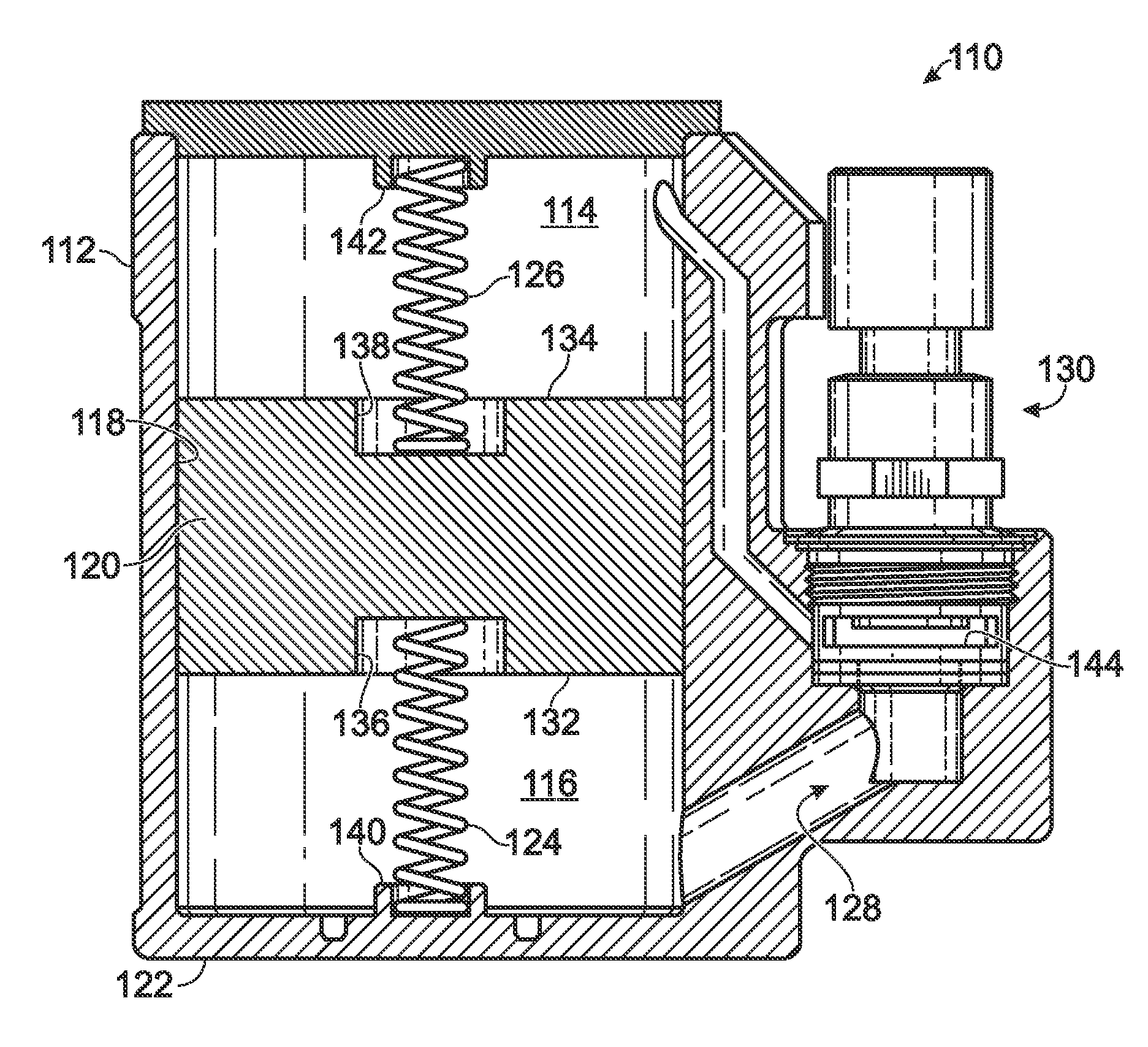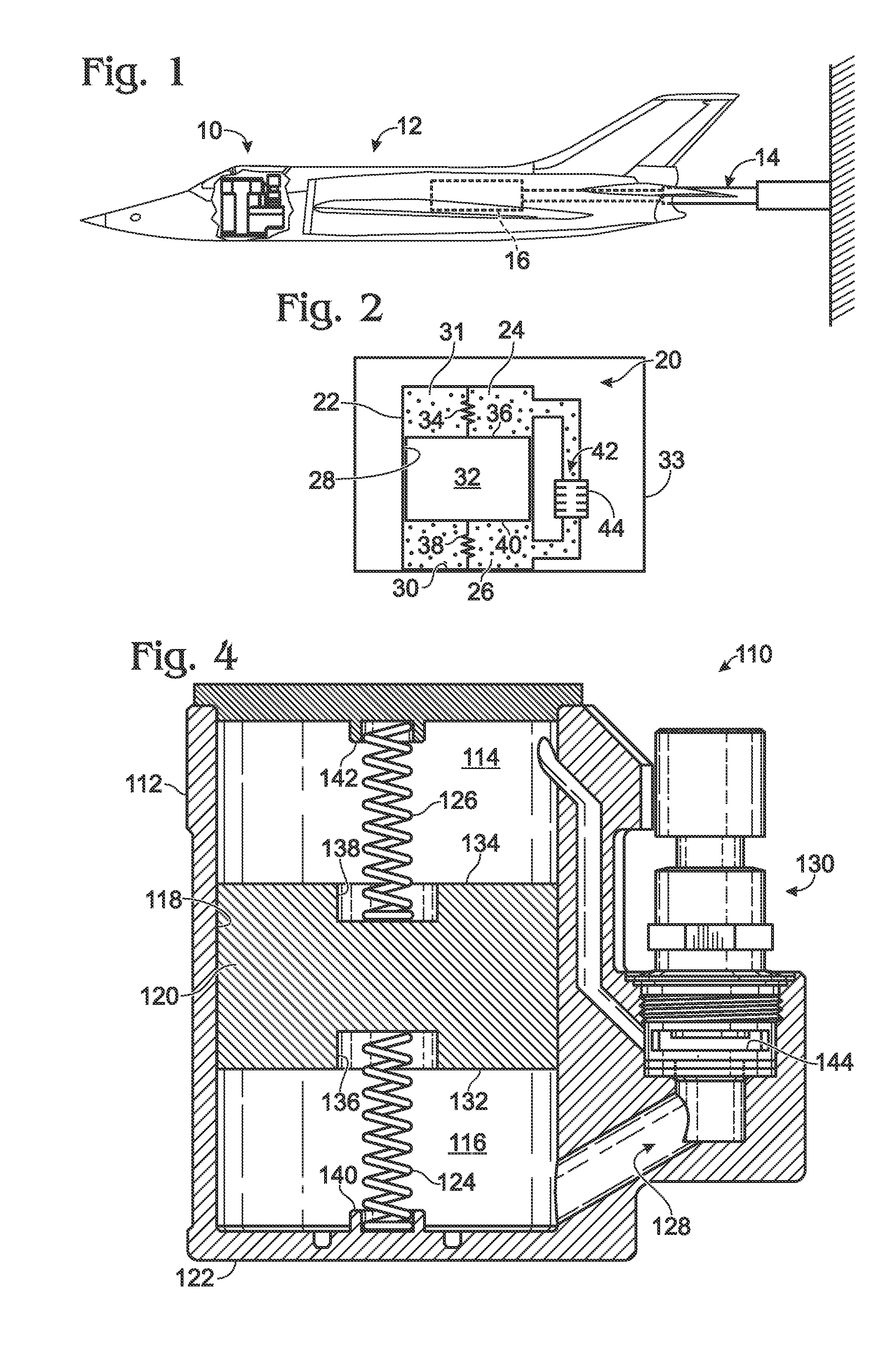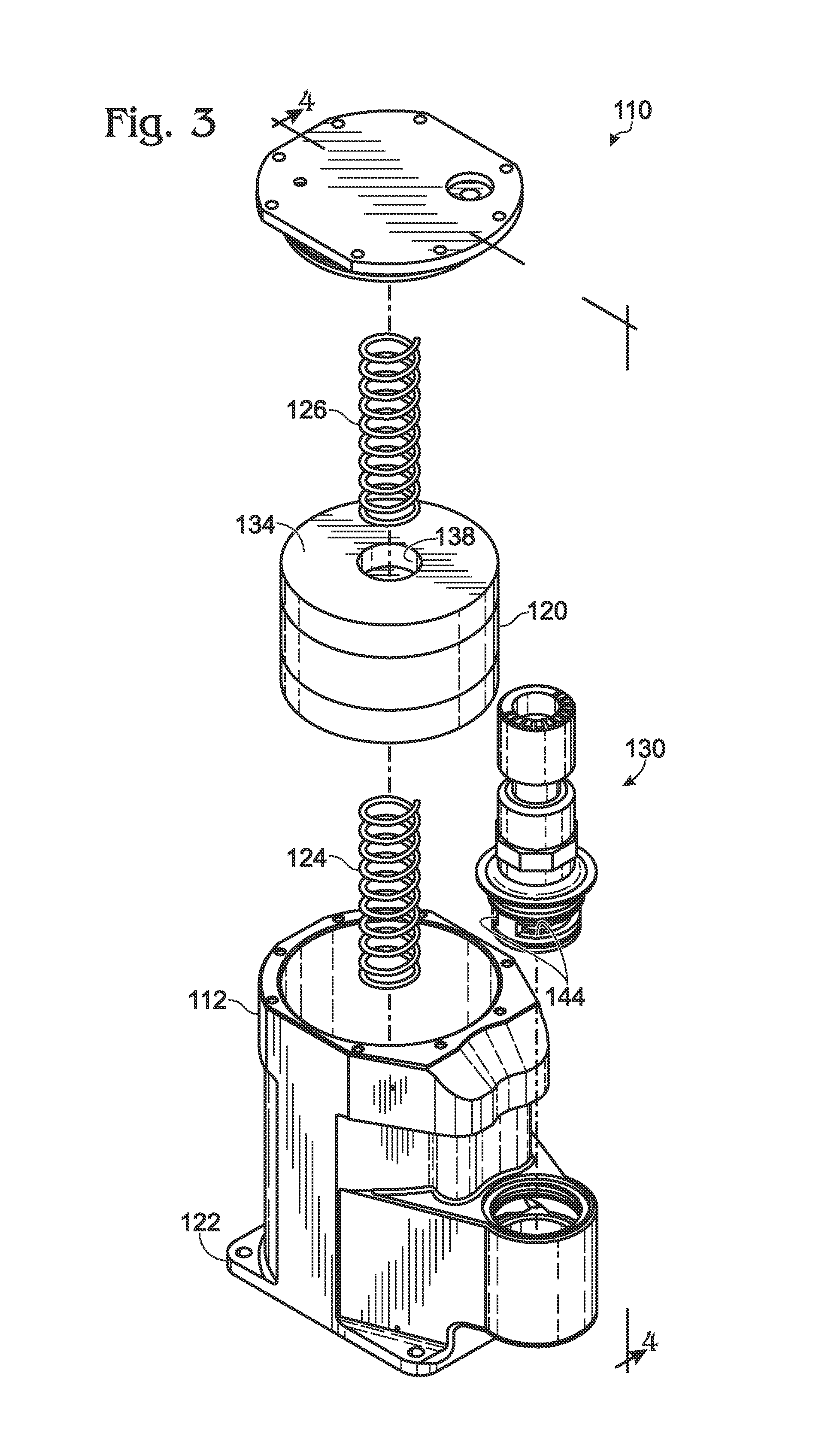Translational tuned mass damper with continuously adjustable damping characteristics for application to high speed wind tunnel testing
a technology of tuned mass and damping characteristics, applied in the direction of shock absorbers, instruments, mechanical equipment, etc., can solve the problems of increasing the chance of scale effects in the wind tunnel data, introducing experimental artifacts, and affecting the accuracy of wind tunnel data
- Summary
- Abstract
- Description
- Claims
- Application Information
AI Technical Summary
Benefits of technology
Problems solved by technology
Method used
Image
Examples
Embodiment Construction
[0016]The present disclosure generally relates to a mass damper that may be coupled to a scale model airplane or other object, typically during wind tunnel testing, to help prevent undesirable vibrations of the model at various natural frequencies of the testing system. More specifically, the present teachings relate to mass dampers that may include a mass configured to move between two pressure chambers, and a fluid passageway connecting the two chambers. In some cases, airflow (or fluid flow) through the passageway may be controlled by an adjustable valve, providing a degree of adjustability not found in previously known mass dampers. Methods and apparatus according to the present teachings may be particularly suitable for use in high speed wind tunnel testing, where dynamic pressure reaches 25 pounds per square foot or more.
[0017]FIGS. 1-4 depict various aspects and embodiments of mass dampers according to the present teachings. FIG. 1 is semi-transparent side elevational view de...
PUM
 Login to View More
Login to View More Abstract
Description
Claims
Application Information
 Login to View More
Login to View More - R&D
- Intellectual Property
- Life Sciences
- Materials
- Tech Scout
- Unparalleled Data Quality
- Higher Quality Content
- 60% Fewer Hallucinations
Browse by: Latest US Patents, China's latest patents, Technical Efficacy Thesaurus, Application Domain, Technology Topic, Popular Technical Reports.
© 2025 PatSnap. All rights reserved.Legal|Privacy policy|Modern Slavery Act Transparency Statement|Sitemap|About US| Contact US: help@patsnap.com



